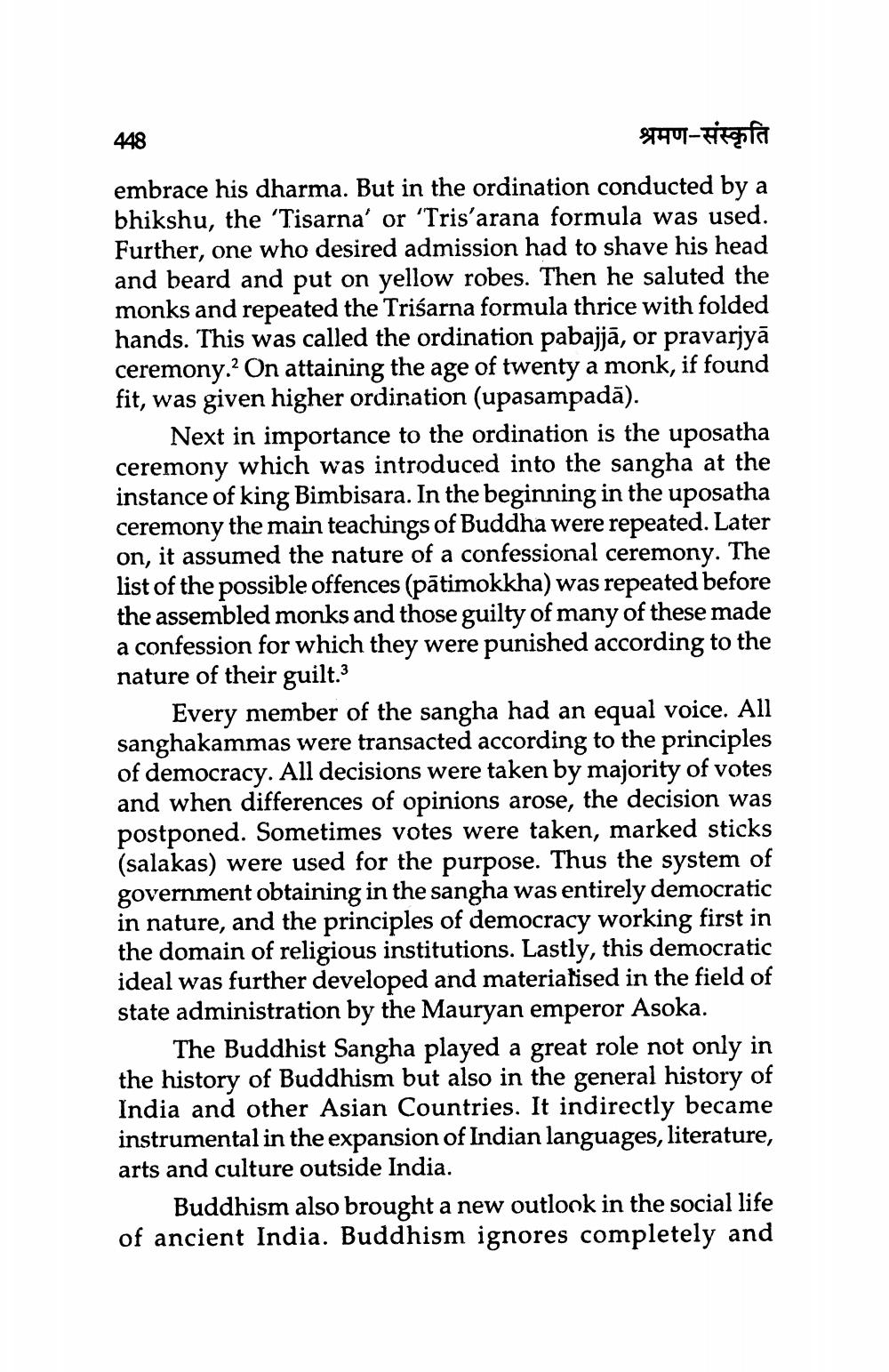________________
448
श्रमण-संस्कृति embrace his dharma. But in the ordination conducted by a bhikshu, the 'Tisarna' or 'Tris'arana formula was used. Further, one who desired admission had to shave his head and beard and put on yellow robes. Then he saluted the monks and repeated the Triếarna formula thrice with folded hands. This was called the ordination pabajjā, or pravarjyā ceremony.? On attaining the age of twenty a monk, if found fit, was given higher ordination (upasampadā).
Next in importance to the ordination is the uposatha ceremony which was introduced into the sangha at the instance of king Bimbisara. In the beginning in the uposatha ceremony the main teachings of Buddha were repeated. Later on, it assumed the nature of a confessional ceremony. The list of the possible offences (pātimokkha) was repeated before the assembled monks and those guilty of many of these made a confession for which they were punished according to the nature of their guilt. 3
Every member of the sangha had an equal voice. All sanghakammas were transacted according to the principles of democracy. All decisions were taken by majority of votes and when differences of opinions arose, the decision was postponed. Sometimes votes were taken, marked sticks (salakas) were used for the purpose. Thus the system of government obtaining in the sangha was entirely democratic in nature, and the principles of democracy working first in the domain of religious institutions. Lastly, this democratic ideal was further developed and materiatised in the field of state administration by the Mauryan emperor Asoka.
The Buddhist Sangha played a great role not only in the history of Buddhism but also in the general history of India and other Asian Countries. It indirectly became instrumental in the expansion of Indian languages, literature, arts and culture outside India.
Buddhism also brought a new outlook in the social life of ancient India. Buddhism ignores completely and




